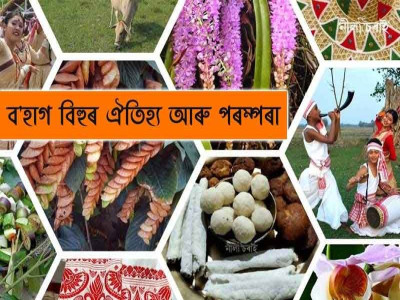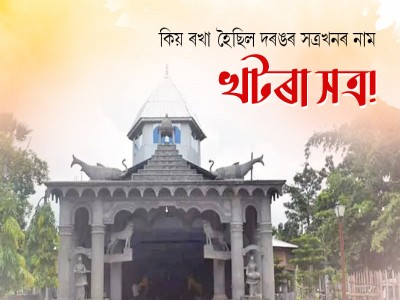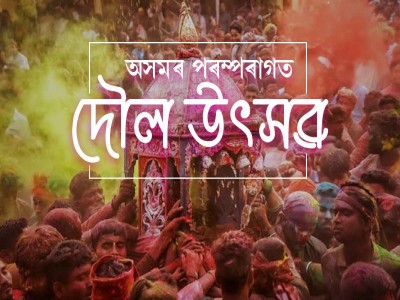
Mayong: The cradle of Black Magic in India
A mysterious village filled with voodoo, black magic, and spells lies on the banks of the Brahmaputra called Mayong, considered as “India's Black Magic Capital” with a fascinating history. Here is everything you need to know about this enchanted location.
Mayong or Mayang, a small village in Assam's heartland, is a unique destination that draws a large number of visitors each year. Mayong is regarded as the cradle of black magic in India, and it deserves all of the attention it receives from a cultural standpoint.
What is the origin of the name Mayong?
A lot of stories and sources support the origin of the name Mayong, however, there is no substantial evidence that they are real. Some believe it is derived from the Sanskrit term Maya, which means 'illusion,' while others believe it is derived from the Dimasa word miyong, which means elephant. According to some residents, the area used to be the home of the Moirang clan from Manipur in the ancient age, and as a result, the word moirang became mayhong, and then Mayong.
Mythology and Mayong
Many stories exist about events that occurred in the village of Mayong, some of which may or may not be real. There are stories about people vanishing into thin air, humans being transformed into animals, and so on.
One example of such myths may be that of Muhammad Shah and his army, as it is widely believed that Muhammad Shah's 100,000 horsemen mysteriously vanished in the Mayong area. This occurred as a result of black magic and witchcraft, and no evidence was left behind after the tragedy.
The location is also mentioned in several epic texts, including Ramanaya, Mahabharta, and Alamgir Nama. Chief Ghatotkacha is reported to have participated in the Mahabharata conflict by receiving magical skills from Mayong, as well as ancient Assam Pragjyotishpura.
Mayong has been the epicentre of Indian sorcery and witchcraft since the dawn of time. As a result, a variety of activities were carried out here, the most renowned of which was Narbali, or human sacrifice. Humans were sacrificed as part of the worship of Goddess Shakti rituals in order to gain various abilities of black magic. Swords that were used to slaughter humans years ago have been discovered during recent excavations in Mayong.
Mayong's black magic is known and practiced by the vast majority of the populace. Locals will offer you palm reading if you happen to visit the place. Some of the locals act as fortune tellers, claiming to be able to predict someone's destiny using seashells and shattered glass.
Mayong also has a large number of doctors, known as bez or ojaa. They don't use medications to treat illness; instead, they practise dark magic and are likely assisted by ghosts. Very unrealistic in today’s time? Locals claim that these doctors alleviate pain with copper plates. They place the plate on the injury, sing a few mantras, and wait for the pain to be 'eating away' as they would say. In the event that a person is in excruciating pain, the plate will overheat and smash to the ground. Many chronic diseases, according to locals, have been treated in Mayong via black magic.
The witch doctors can also use their magic to track for a misplaced item. When someone loses something, they go to the doctor, who plants a flower inside a metal bowl and begins chanting mantras, according to the locals. The bowl begins to move on its own on the ground, all the way to the location where the missing object is kept, as if by magic.
Mayong: A popular tourist destination
The state promotes Mayong as a tourism destination, and the number of visitors to this eerie community has increased dramatically in recent years. As a result of its enigmatic past and black magic, it has become a fascinating site to visit today. Whether you're an inquisitive tourist, adventurer, history buff, or simply captivated by black magic. The village's Mayong Central Museum and Emporium houses a number of antiques and archaeological relics, as well as publications about ancient Ayurveda and black magic. You can also mingle with the locals, learn some stories, and perform some magic tricks – merely enacting to be part of a legacy.
The village is located near the Pobitora Wildlife Sanctuary, which hosts an annual celebration called Mayong Pobitora Festival in November, where tourists may witness an incredible mix of magic and wildlife. Weapons, magical relics, Scriptures, old coins, jewellery made from bones and skulls, and equipment used for human sacrifice are among the artifacts on display at the Mayong Central Museum and Emporium of Black Magic and Witchcraft, which opened in 2002.
Final Thoughts
Mayong's black magic age has passed through generations, giving way to white magic (a moderate form of black magic), which is now widely acknowledged. According to the locals, secret areas of black magic still exist today, hidden and unspoken of.
Today, for those who believe, white magic is used to treat illnesses, locate lost items, apprehend burglars, and perform clairvoyance sessions. Mayong is all about the line between reality and illusion, which is a road steeped in mystery.
Disclaimer: The opinions expressed in this article are those of the author's. They do not purport to reflect the opinions or views of The Critical Script or its editor.

Newsletter!!!
Subscribe to our weekly Newsletter and stay tuned.

















Related Comments